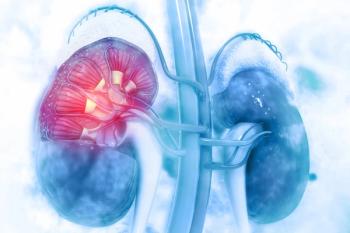
Evaluating the EVA1 Membrane Protein as a Target for Glioblastoma Therapy
Because EVA1 is not expressed in normal cells, there may be less toxicity when targeting it to eliminate glioblastoma-initiating cells.
Toru Kondo, PhD, presented a seminar at the 16th Annual World Antibody Drug Conjugate (ADC) Summit in San Diego, CA, titled “Evaluating EVA1-ADC as a Novel Therapeutic Strategy for Eliminating Glioblastoma-Initiating Cells”. At the Summit, Kondo spoke with CancerNetwork® about his team’s work on ADCs.
His presentation detailed the EVA1 membrane protein’s viability as a target for eliminating glioblastoma-initiating cells. He said that if they can get a good antibody to target EVA1, it could potentially be used as therapy for glioblastoma.
Additionally, Kondo used the popular antigen CD133 to explain that, because it is also expressed in normal cells, targeting it may yield higher levels of toxicity and adverse effects (AEs) than expected as normal cells are eliminated as well as the glioblastoma-initiating cells. Conversely, EVA1 is not expressed in normal stem cells; thus, there may be fewer AEs when targeting EVA1.
Kondo is a distinguished professor from the Institute for Genetic Medicine at the University of Hokkaido in Hokkaido, Japan.
Transcript:
We are looking for which factors [are] upregulating or downregulating the glioblastoma-initiating cell. We used a microarray to check the expression levels of glioblastoma-initiating cells and non-tumor cells, such as neural stem cells or brain cells. We found that many factors upward and downward regulate. Among them, we focused on one membrane protein named EVA1…. From this data, we imagine that if we can get a good antibody to EVA1, this antibody can be used for the elimination of glioblastoma-initiating cells. That means therapy for [glioblastoma].
For instance, CD133 is a very famous antigen, but in my opinion, CD133 is expressed in normal neural stem cells and in other stem cells. That means if we target CD133, we are very much afraid of the [adverse] effects because, as you can understand, if we combine the anti-CD133 antibody with an MMAE drug, these ADCs can target normal stem cells and kill the stem cells. That means that [a patient] cannot survive for a long time. In contrast, EVA1 is not expressed in normal neural stem cells. Some of the differentiation cells express EVA1; however, normal stem cells don’t express EVA1. Therefore, the [adverse] effects are very low. Therefore, we believe that [this strategy is] the best strategy to kill the cancer cells alone.
Reference
Kondo T. Evaluating EVA1-ADC as a novel therapeutic strategy for eliminating glioblastoma-initiating cells. Presented at the 2025 World Antibody Drug Conjugate Conference; San Diego, CA; November 3-6, 2025.
Newsletter
Stay up to date on recent advances in the multidisciplinary approach to cancer.




















































































